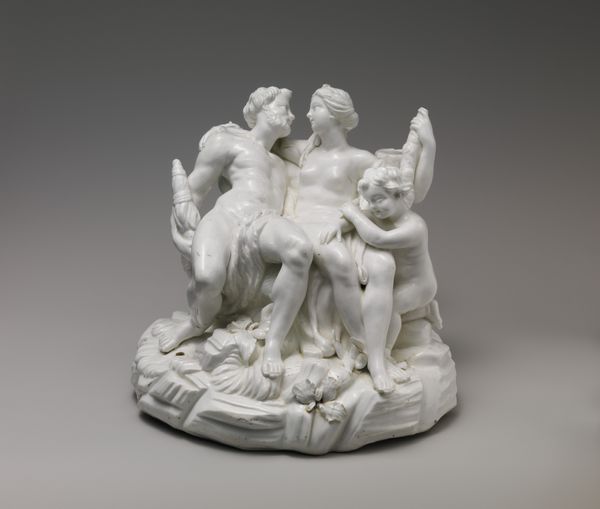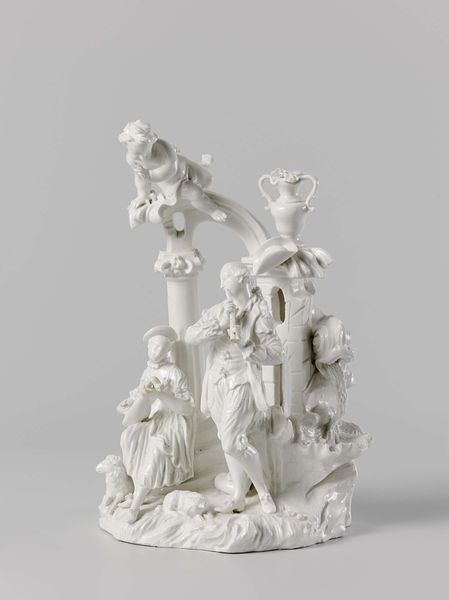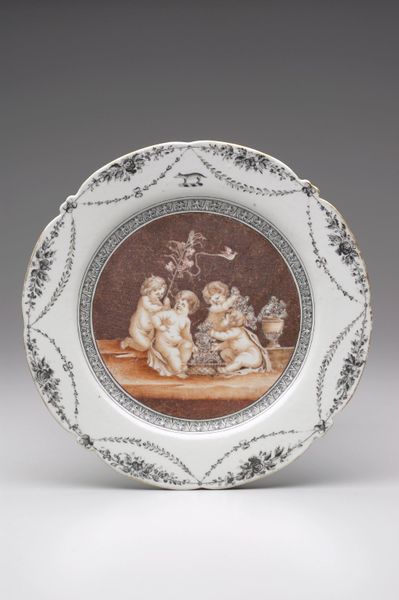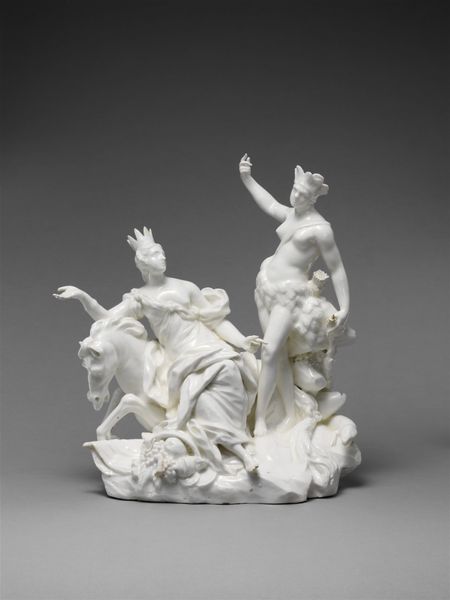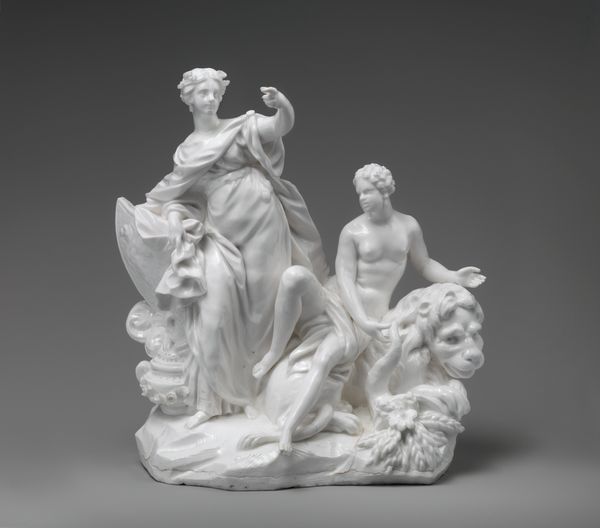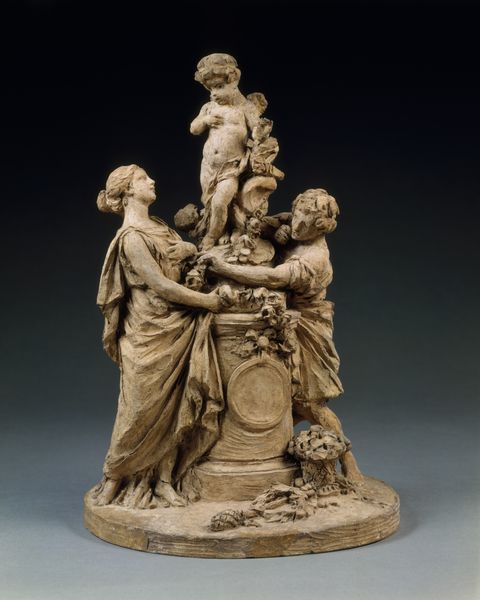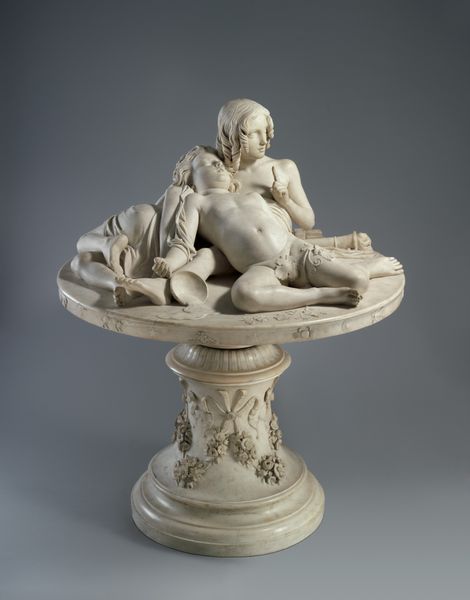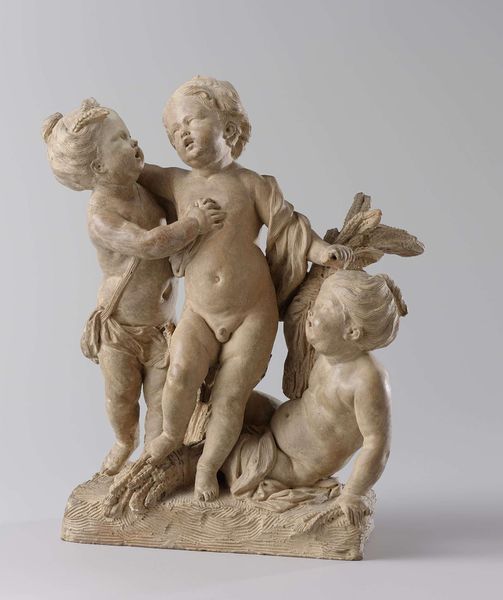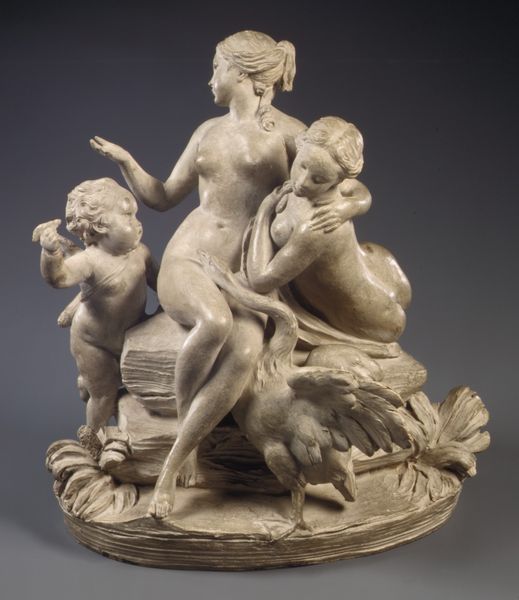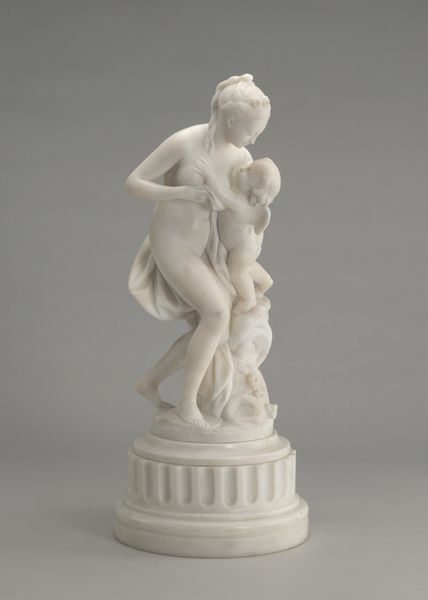
ceramic, porcelain, sculpture
#
portrait
#
sculpture
#
ceramic
#
porcelain
#
sculptural image
#
figuration
#
child
#
sculpture
#
group-portraits
#
men
#
decorative-art
#
rococo
Dimensions: Overall: 14 1/4 × 10 3/4 in. (36.2 × 27.3 cm)
Copyright: Public Domain
Curator: Here we have "The Royal Family," a porcelain sculpture produced by the Chelsea Porcelain Manufactory between 1756 and 1766. Editor: It’s striking! The cool white porcelain and delicate floral base give it a rather opulent and restrained feel all at once. Curator: This sculpture speaks volumes about power structures within 18th-century European courts. The central figures, presumably the King and Queen, are elevated, while the smaller figure seems subordinate. Editor: Note how the composition subtly reinforces this. The male figure is centered and the brightest, dominating the field, whilst the Queen mirrors his pose as though a direct response. Curator: The positioning and attire of the figures suggest a highly formal, staged representation of monarchy, meant to project authority and stability. This period, remember, was marked by political and social upheavals challenging traditional hierarchies. Editor: And yet, the choice of porcelain, while precious, lends an air of fragility to this projection of power, like beautiful ice sculpture. The way the material interacts with light and shadow really amplifies the sculptural details. Curator: Absolutely. These types of sculptures also served as markers of status within the domestic sphere. Displaying such pieces reinforced the owners' affinity with—or aspiration to—aristocratic ideals and taste. Editor: Indeed! By bringing it into the private spaces of wealthy individuals, these figures also functioned as didactic tools, literally staging the theatricality and performativity of noble lineage. The material qualities enhance this experience: the whiteness further simplifies them while the intricate details of their hair, clothing and the Rococo-esque platform complicate this simplification of noble status. Curator: The Royal Family in miniature, asserting particular values in a period undergoing great social and philosophical transformation! Editor: I'm taken by the overall elegance achieved with such stark materials and minimal decoration—its ability to portray weightiness through levity! Curator: Looking through a critical lens reminds us that artistic choices reflect broader sociopolitical climates, informing how we understand identity. Editor: Considering material choices alongside their aesthetic impacts allows us to appreciate not only artistry, but meaning, within an artwork’s cultural moment.
Comments
No comments
Be the first to comment and join the conversation on the ultimate creative platform.
